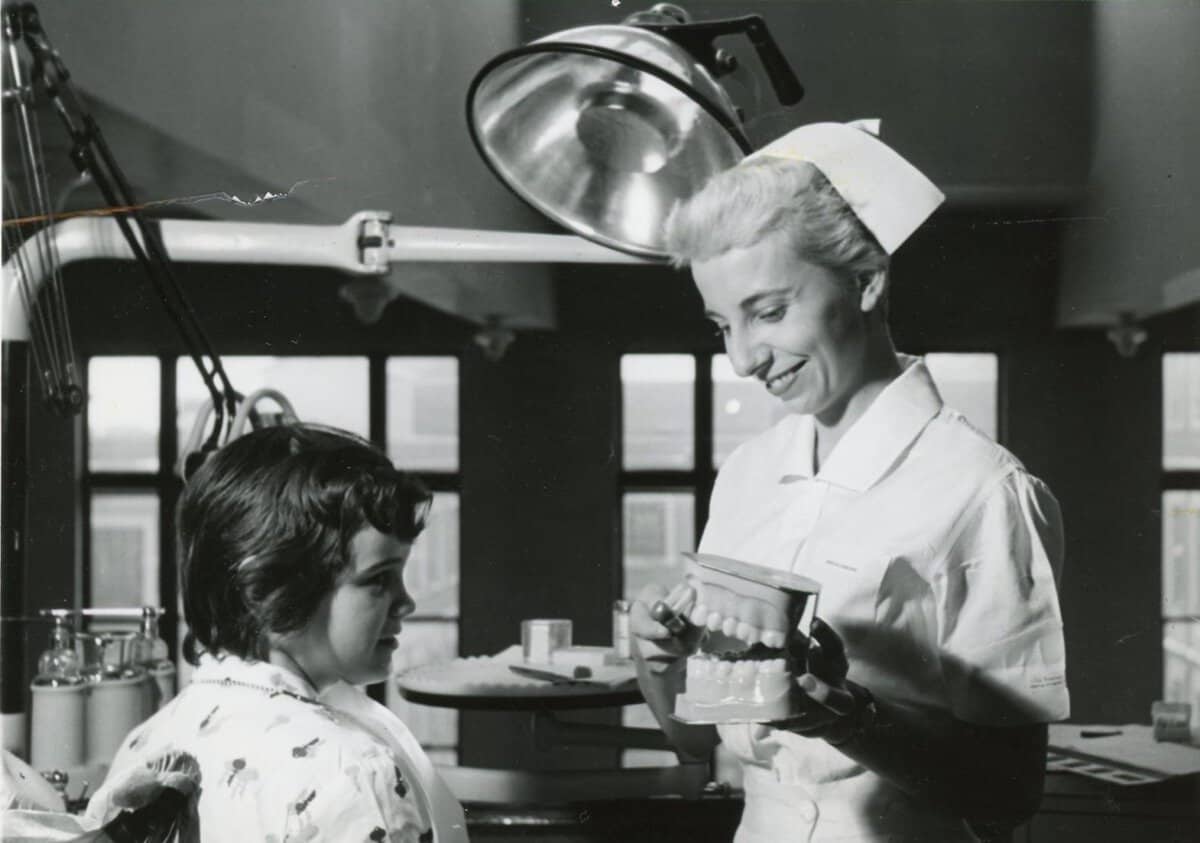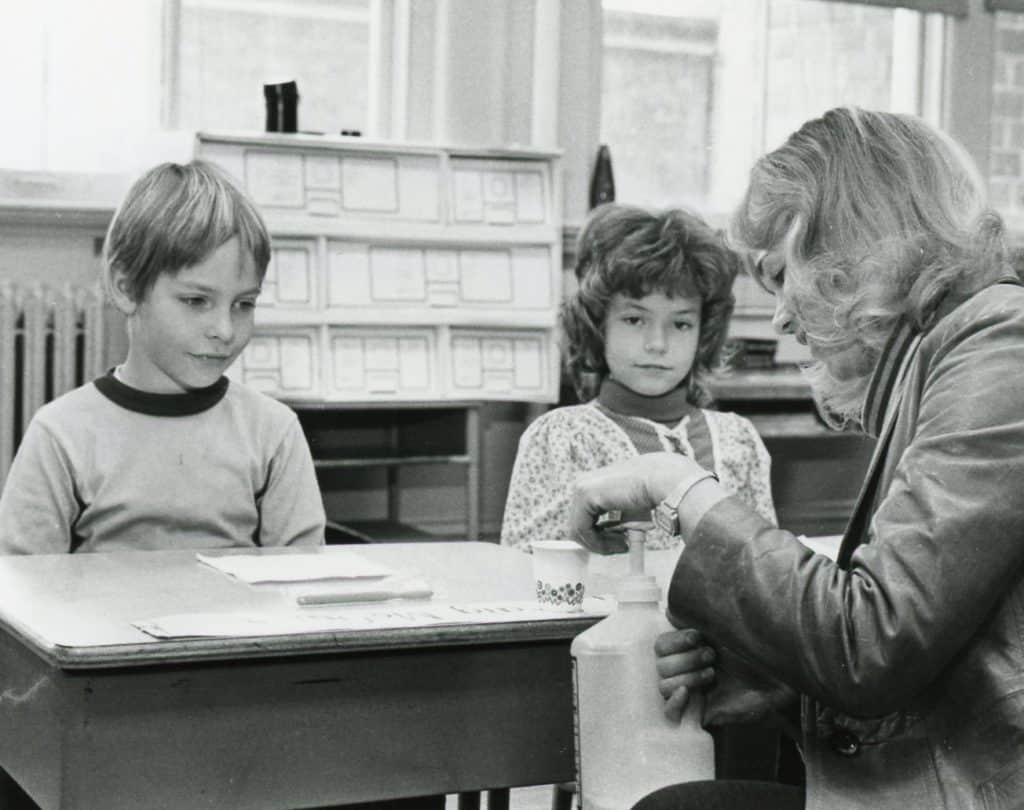This post was written by Iowa Women’s Archives Graduate Assistant Beatrice Kearns.
Going to the dentist is a common childhood fear, but dental hygienists have always worked to make the dentist’s office a more welcoming place for patients. Community service and outreach played a major part in the dental hygiene profession, and the University of Iowa Dental Hygiene (UIDH) program was no exception. “Outreach programs in dental hygiene began in 1953—the same year the dental hygiene program was established,” as stated in the introduction to the Community Health course syllabus. Community service and public outreach were baked into the curriculum at UIDH. Students took classes on oral pathology, dental anatomy, and pharmacology, but senior hygiene students also look classes on community health. These classes required students to create projects and initiatives to serve and support different groups, often focusing on things outside of the traditional in-clinic experiences. Hygiene students went to nursing homes and schools, but also into institutions such as the Iowa Secure Medical Facility, Mental Health Institute at Independence, and the Pediatric Psychiatric Unit at what was then known as the University of Iowa Hospitals & Clinics. Students found these experiences valuable; it opened their eyes to a wider scope of practice.
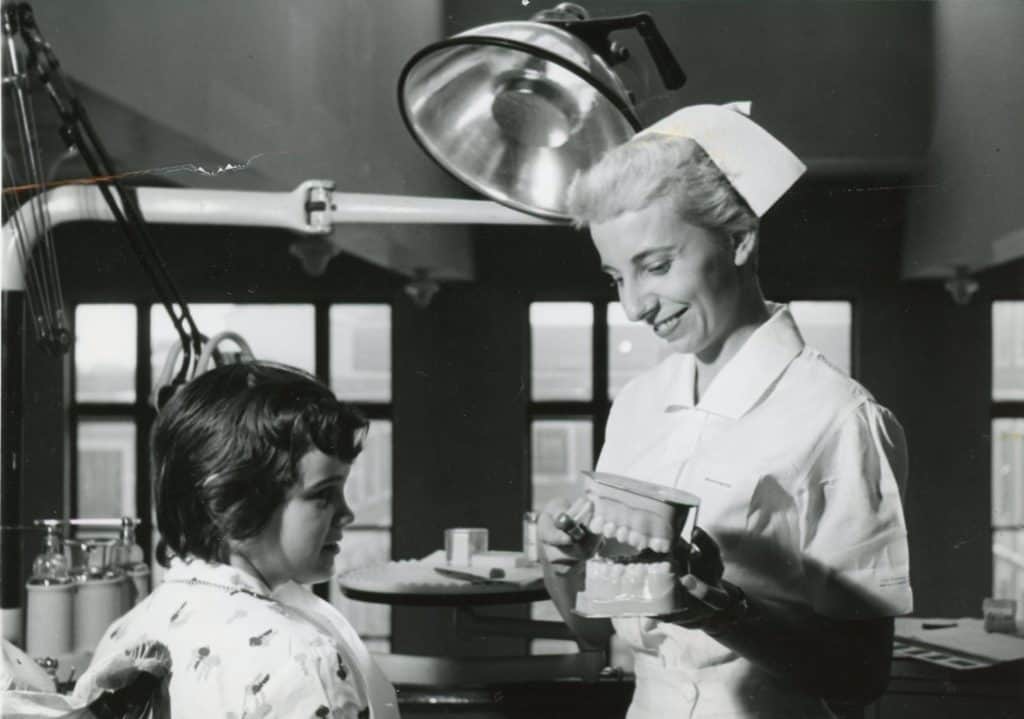
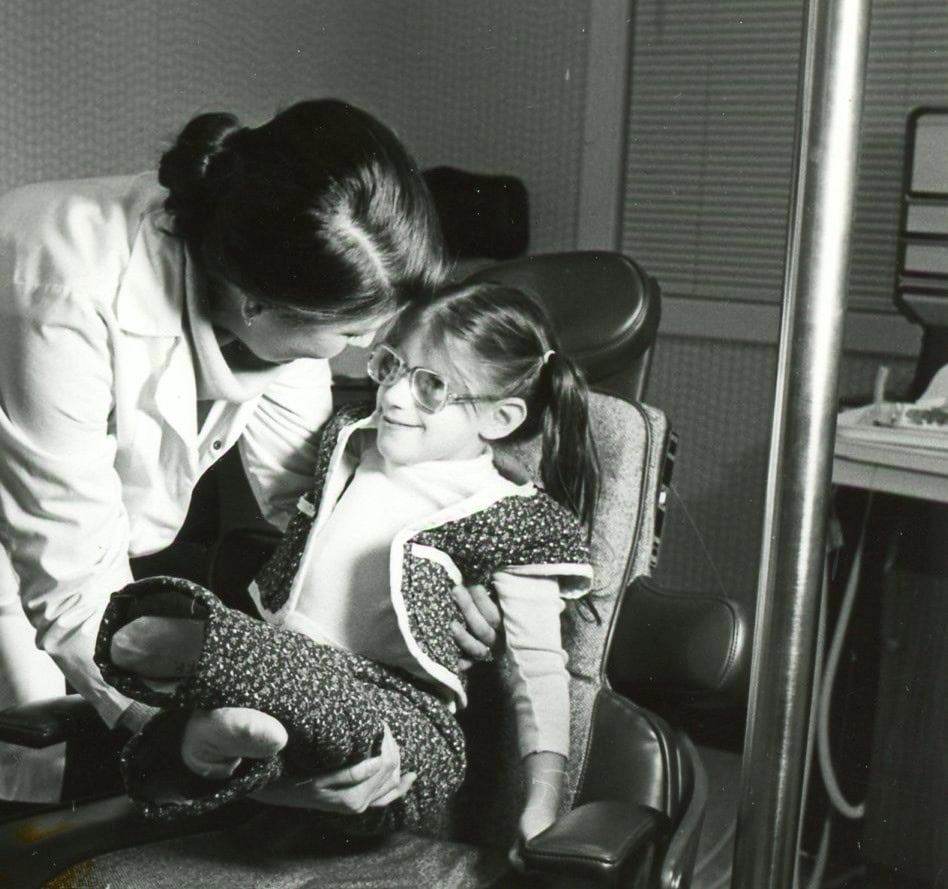
Dental hygiene outreach often overlapped with public health initiatives, with monies from the Federal Maternal and Child Heath fund coming through the Iowa Department of Public Health supporting projects. UIDH students were expected to create their own lessons, visual aids, activities, and handouts to keep children engaged. Pre- and post-tests taken by the kids regularly found that there was a statistically significant improvement in the children’s knowledge of oral health and hygiene. These outreach projects in elementary schools continued throughout the tenure of the dental hygiene program, from the 1950s to the 1990s, and were well-received by teachers and principals across Iowa.
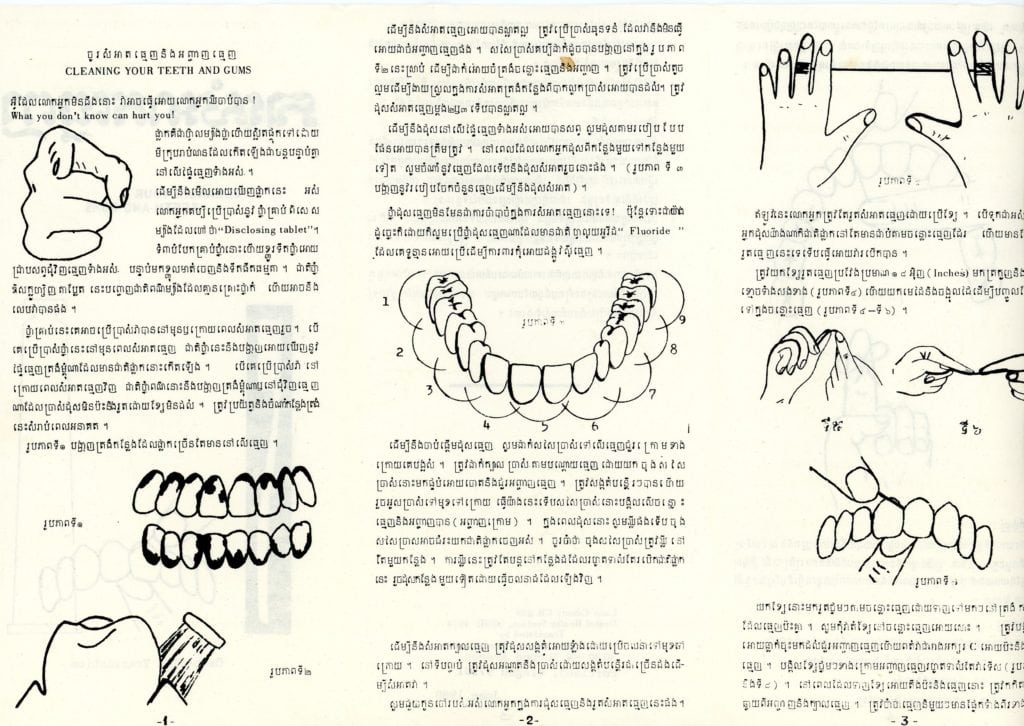
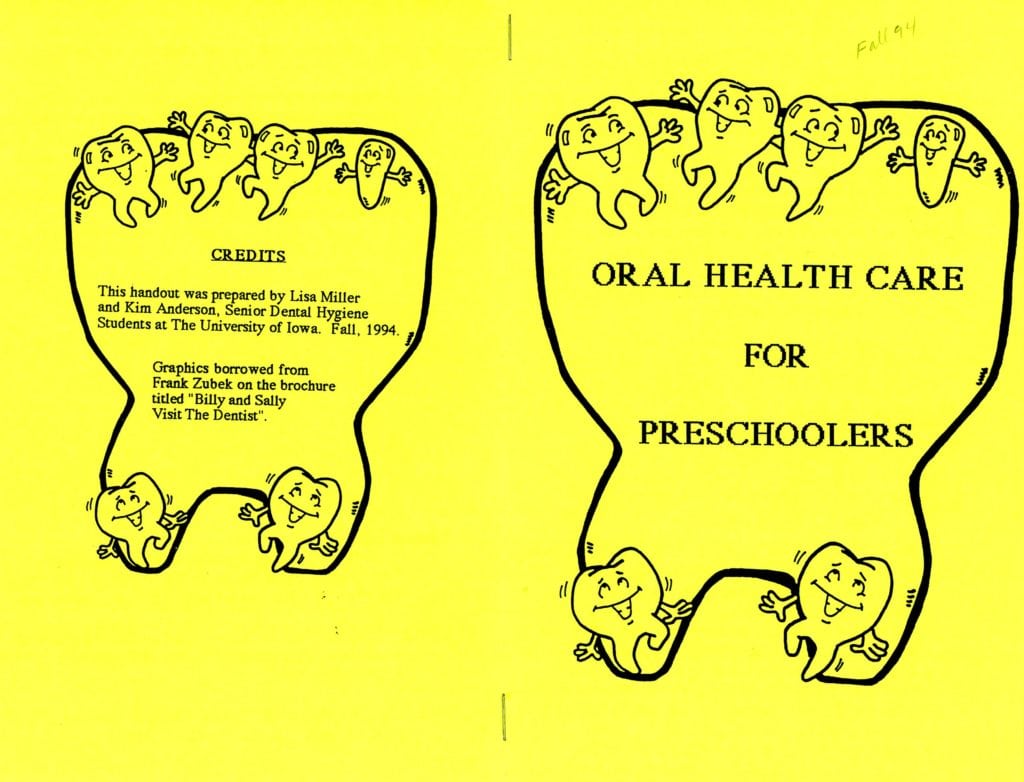
UIDH was not only concerned with oral health but worked to understand the bigger picture around dental health care. Courses on social factors and oral health took an interdisciplinary approach to understanding the barriers to receiving care. This historical, sociological, and political understanding of issues preventing people from getting dental care made the hygiene students better equipped to serve their communities and often led to more impactful outreach projects. For example, students worked with the Iowa Refugee Center to translate informational pamphlets into Vietnamese, Laotian, and Cambodian to reach the growing refugee populations speaking these languages. The College of Dentistry’s mobile clinic worked with organizations such as the Muscatine Migrant Committee to provide tooth cleanings for migrant farm workers because there were not enough dentists in the Muscatine area to care for all of the patients. Doctoral dental students and hygienists worked together in the mobile clinic to provide care. UIDH students worked with inmates at the Anamosa State Reformatory to improve their dental health and create sustainable habits for reentry into society. The warden said that this project was particularly successful because dental issues were something that nearly all inmates struggled with, and their confidence would improve so much with better oral hygiene. Fluoride mouth rinses were taken to rural areas and mobile home parks that did not have fluorinated water supplies. This rinse added an extra layer of protection for tooth enamel.
UIDH faculty and students understood that providing the best care meant connecting to the community they were serving. This intersectional view and approach to care influenced students even after their graduation from the program. Alumni Sara Kozeluk worked as a community dental hygienist for the Lac du Flambeau Band of Lake Superior Chippewa tribe, providing dental care to indigenous people. Kozeluk highlighted the importance of knowing who she was serving and understanding their cultural practices. In 1992, students and faculty from UIDH got to travel to the Indian Health Services in Minocqua, Wisconsin, to learn about dental care for indigenous groups.
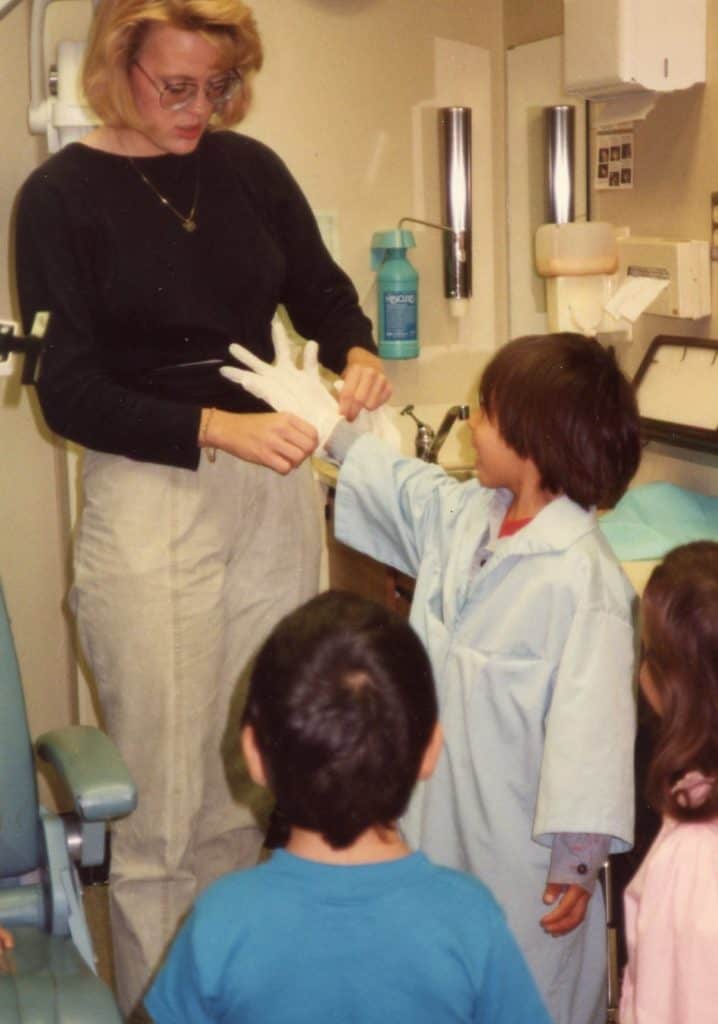
The University of Iowa Dental Hygiene Program was shut down to cut spending and the final class graduated in 1995. Since then, the shortage of dental health providers has only increased. Eighty-seven of Iowa’s ninety-nine counties have high need for more providers, and even higher need for providers that accept Medicaid or Medicare. Today, the UI College of Dentistry and Dental Services’ Preventative and Community Dentistry Department aims to provide the kind of community-oriented care that the Dental Hygiene Program used as a tool to reach Iowans and increase their access to oral health care.
To learn more about the dental hygiene program and its services, visit the exhibit in the Iowa Women’s Archives’ reading room on display in spring 2025.
